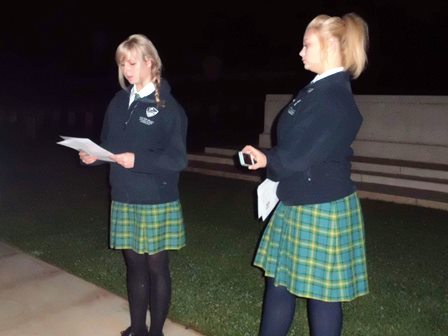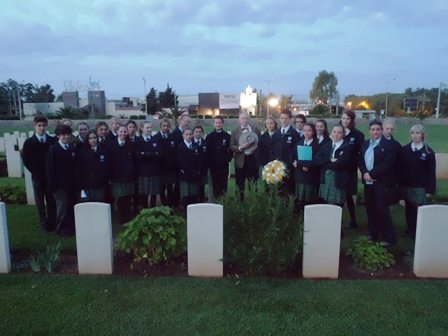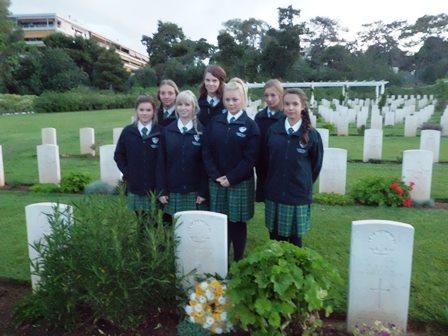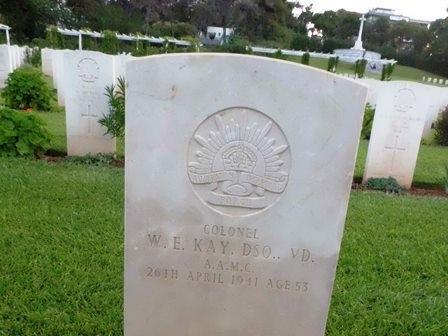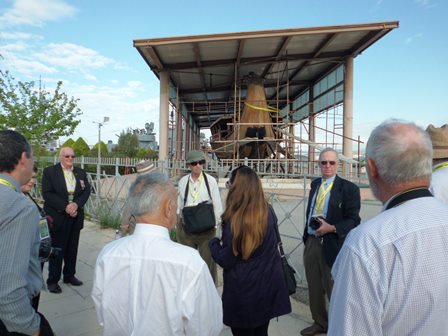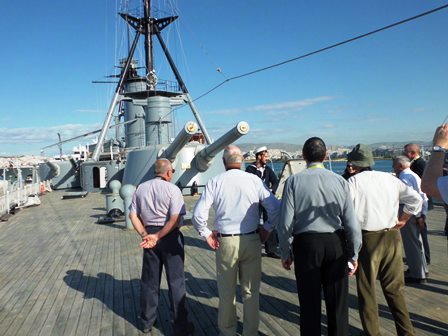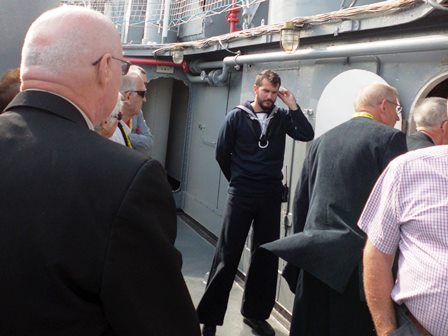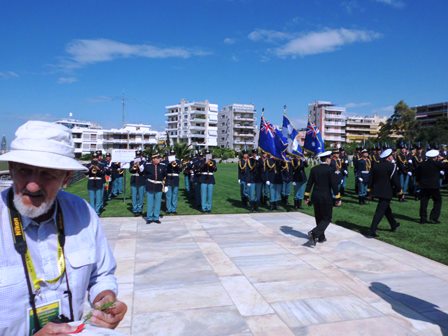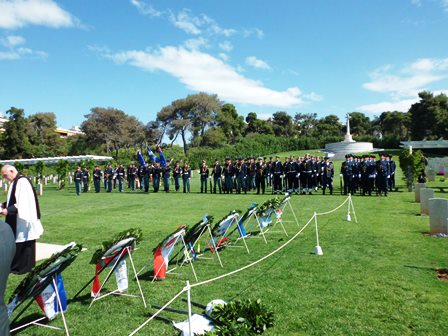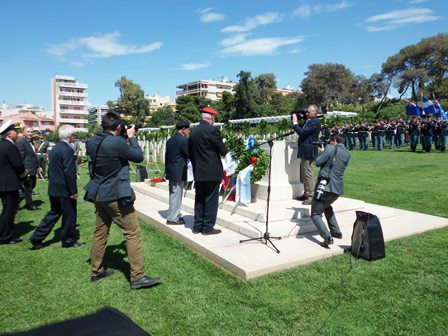We rose early, gathered in the dining room of our hotel for coffee and treats before we headed to our coach where Anthony, our driver for the whole tour with his coach provided by the Andy's Tour Company, was waiting for us. Anthony has been our driver for the past 5 years and is part of the Military History Tours Team.
We arrived at the Phaleron Commonwealth War Graves Cemetery at 0520, set up and waited until our starting time of 0530. The Greek Army Priest from the Infantry was waiting for us and the group of students from the Hunter Valley Grammar School arrived shortly after. As we did not have a bugler with us, Matt Walsh provided the necessary support music through his computer and speakers.. The music which enhanced the mood of the Service which went well and the programme was well received by those in attendance. A number of Australians on tour and locals attended the Service.
The Lessons were read by Caitlan Gibson and Jordan Newman from Hunter Valley Grammar School and we laid our wreaths just as the Dawn was breaking and the last post was being played.
Between our Dawn Service and the Embassy's Service we had breakfast at a nearby hotel and then visited the historic Averof, the once proud flagship of the Greek Navy.
Ten years after the Greek – Turkish War of 1897, the Hellenic Navy had only antiquated torpedo – ships and three battleships, manufactured in 1889.
The need to create an effective fleet resulted at the end of 1908 in its reinforcement. Four brand new English and four German destroyers (torpedo – ships) were acquired. In addition, the Battleship "G. Averoff", the pride of the Hellenic Navy, joined the fleet.
For the resuscitation of the fleet, the re-elected government of Mavromichalis approached the Orlando Shipyards, at Livorno, Italy, where at the time, a battleship was under construction. It had been ordered and then cancelled by the Italian Navy. The Greeks offered to advance one third of its total cost and thus, secured the acquisition of the battleship. The amount given in advance came from George Averoff's will and the rest of the cost was covered by a loan from abroad. George Averoff had been a wealthy Greek patriot and benefactor. He had willed funds for the Greek Navy to acquire a training ship for the Greek Naval Academy.
Its top speed was 23 knots. "G. Averoff" was launched on the 27 February 1910. It arrived at Faliro Bay on the 1 September 1911, where the Greeks welcomed it with enthusiasm.
The battleship, with the beginning of the First Balkan War in October of 1912, was at the head of the Aegean Fleet, under the command of Rear Admiral Paylos Kontouriotis and set sail to Dardanelles. It took over Limnos where the anchorage of the fleet was established in Moudros bay. After that, the liberation of Aghio Oros and the East and North Aegean islands (Thasos, Samothraki, Tenedos, Aghios Eustratios, Mitilini, Chios) took place .
An engagement with the Turkish fleet was inevitable. Rear Admiral Kountouriotis' plan favoured a battle offensive. On 3 December 1912 , he ordered the fleet to sail towards the Ottoman fleet that had made its appearance at the exit of the Dardanelles. Kountouriotis dispatched his famous signal to the Greek ships which were led by 'G. Averoff'. 'By the power of God and the wishes of our King and in the name of justice, I sail towards the victory against the enemy of the Nation.'
The successful result of the battles of Elli and Limnos that followed, discouraged the Sultan and the Sublime Porte's expectations of controlling the Aegean Sea. The Ottoman Fleet would never attempt another exit to the Aegean.
Our group then attended the 11 o'clock Anzac Day Commemoration Service at the same site as the dawn service. The Australian Ambassador, Mrs Jenny Bloomfield, gave the main address both in English and
Greek and Sally Wolstenholme from the Hunter Valley Grammar School gave a tribute to Returned Australian Serviceman.
Two members of our party laid wreaths Matt Walsh and George Grivas.
Following the service our tour group was invited by the Australian Ambassador to attend an informal gathering within the cemetery where members of the group had the opportunity to meet and speak with the Ambassador and the Greek Admiral who will be representing the Hellenic Armed Forces at the service at the Sydney Cenotaph conducted by the Joint Committee for the Battle of Greece and Crete. This will take place on the 17 May 2014
A very moving day that has set us up for the tour ahead that starts tomorrow as we depart Athens for the battlefields of the campaign.
